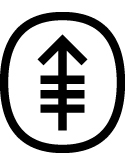| Abstract: |
Use of growth factors to augment hematopoietic recovery after cytotoxic therapy is a useful method for dose intensification. We wanted to evaluate the clinical and cost-effectiveness of granulocyte-macrophage colony stimulating factor (GM-CSF; Leucomax(TM)) in patients undergoing autologous bone marrow transplantation (ABMT) for Hodgkin's disease. Twenty-four patients with Hodgkin's disease were treated with high-dose chemotherapy and ABMT. Patients were then randomized in a double-blind manner to receive GM-CSF intravenously (10 μg/kg) over 6 h or placebo until the absolute neutrophil count (ANC) was greater than 1000/mm3 for 3 days. The study medication was stopped after 30 days. Patients treated with GM-CSF (n = 12) had shorter periods of neutropenia (median duration of an ANC of less than 1000 cells/mm3, 16 versus 27 days on placebo; p = 0.23), shorter periods of platelet-transfusion dependency (median duration, 13.5 versus 21 days on placebo; p = 0.03), shorter hospitalizations (median hospital stay, 32 versus 40.5 days on placebo; p = 0.0004). Other clinical outcomes, such as frequency and severity of toxicities, development of pneumonia or infection, in-hospital death, and response rate were similar in the two groups. Actuarial long-term disease free survival was 58% for patients treated with GM-CSF and 50% for patients who received placebo after 38 months of follow up (p = 0.6). The group treated with GM-CSF had lower total changes after infusion of autologous marrow than the placebo group (median in-hospital charges of $39,800 compared with $62,500; p = 0.005) because of lower post-infusion charges for room and supportive therapy. Administration of GM-CSF enhances myeloid and platelet recovery and is cost effective in treatment of patients with relapsed Hodgkin's disease who received intensive chemotherapy and ABMT. Further work is needed in improving route and duration of GM-CSF infusion. |



